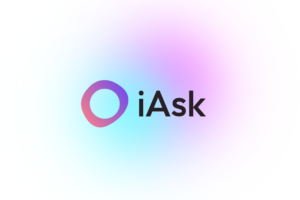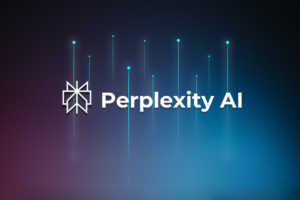Imagine launching a software product only to find unexpected crashes, sluggish performance, or frustrated users leaving negative reviews.
In today’s hyper-competitive SaaS and software landscape, product quality is directly tied to customer trust, adoption, and brand reputation.
This is where AI in software testing becomes a transformative force. AI doesn’t just detect defects—it predicts them, prevents them, and optimizes the entire QA lifecycle. AI transforms QA from a bottleneck into an accelerator.
Modern QA leaders, CTOs, startups, and product companies are adopting AI-driven testing because it shifts quality assurance from a reactive activity to a strategic, data-led, predictive engine.
Industry reports on digital transformation consistently show that teams implementing AI in QA experience:
-
Shorter test cycles
-
Higher defect detection accuracy
-
Improved release confidence
-
Better collaboration between QA & development
-
Up to 50–70% reduction in repetitive testing effort
The Role of AI in Modern QA Automation
AI enhances traditional QA by analyzing large datasets, user behavior patterns, and code-level insights that manual testing simply cannot match.
Here’s how AI transforms QA automation:
1. Smart Test Case Generation
AI models can analyze:
-
Code commits
-
User journeys
-
Historical defects
-
API behavior
…and automatically generate optimized test cases.
This eliminates hours of manual planning and ensures complete, intelligent coverage.
2. Predictive Defect Analysis
AI identifies patterns and risk zones by evaluating:
-
Previous bugs
-
Code complexity
-
Component performance trends
-
Developer change history
This predictive capability helps teams focus testing where defects are most likely, reducing surprises during release.
3. Automated Test Maintenance
Traditional automation scripts frequently break when UI or functionality changes.
AI-powered “self-healing” scripts detect changes and automatically adjust locators and test paths, making automation more stable and future-proof.
4. Performance Optimization
AI-driven performance testing tools simulate:
-
Peak traffic
-
Real-world load conditions
-
User geography distribution
-
System bottlenecks
…helping teams identify performance issues long before they impact real users.
5. Continuous Learning & Improvement
AI models learn from each execution, making the test suite smarter and more accurate over time—something traditional frameworks cannot do.
AI in Action: A Real-World Scenario
A mid-sized SaaS startup planned a major update rollout. Traditionally, their regression suite required 7 days of manual + automated testing.
After adopting AI-driven testing:
- Smart Test Case Generation: AI created new test scenarios based on recent updates and user data.
- Predictive Defect Analysis: High-risk modules were automatically highlighted for deeper testing.
- Self-Healing Automation: Scripts updated themselves when UI elements changed.
- Faster Feedback Loop: Results were available within hours via AI-prioritized execution.
Outcome:
-
Testing time reduced: 7 days → 1.5 days
-
40% fewer critical issues in production
-
QA team shifted focus from execution to exploratory and usability testing
-
Faster product release with higher confidence
This demonstrates AI’s ability to improve speed, accuracy, and product reliability simultaneously.
Traditional vs AI-Driven Testing: Clear Comparison
| Feature | Traditional Testing | AI-Powered Testing |
|---|---|---|
| Test Case Generation | Manual, repetitive | Automated & adaptive |
| Bug Prediction | Reactive | Predictive insights |
| Script Maintenance | Regular breakages | Self-healing scripts |
| Time to Feedback | Days | Hours |
| Resource Efficiency | High manual load | Optimized workloads |
Benefits of AI in Software Testing
- Faster Time-to-Market: AI dramatically speeds up test cycles, helping companies release faster without compromising quality.
- Improved Accuracy: Machine learning models minimize human limitations like oversight, fatigue, and bias.
- Reduced Operational Cost: Less manual work = lower testing cost and more efficient resource utilization.
- Proactive Bug Detection: AI identifies defects before they surface in production, reducing risk and improving customer experience.
- Enhanced User Experience: Improved performance, fewer bugs, and consistent functionality lead to happier users—and stronger retention.
For startups, SMEs, and SaaS companies, these advantages directly affect:
-
Customer acquisition
-
Revenue
-
Brand credibility
-
Market competitiveness
Why Companies Should Start Investing in AI-Powered Testing?
Adopting AI in QA isn’t just a trend—it’s a strategic necessity.
Businesses benefit from:
-
Faster feature launches
-
Reduced regression efforts
-
Data-driven defect prediction
-
Stronger synergy between QA & development
-
Scalable testing frameworks for growing products
Organizations integrating AI into quality assurance are better positioned for long-term scalability, innovation, and customer trust.
The Future of QA Is AI-Powered
The era of traditional, reactive QA is fading.
AI empowers teams to predict, prevent, and accelerate—creating a new standard for high-quality software delivery.
Whether you are a QA manager, product owner, or tech leader, adopting AI in software testing helps you:
-
Release faster
-
Reduce bugs
-
Improve user experience
-
Strengthen product reliability
-
Build long-term competitive advantage
Takeaway:
Even a small step toward AI-driven automation can significantly elevate your QA efficiency, shorten release cycles, and transform your entire product development workflow.
The future of Quality Assurance is predictive, autonomous, and AI-powered—and now is the best time to embrace it.











AI in Software Testing: The New Era of Faster, Smarter & Predictive Quality Assurance
Imagine launching a software product only to find unexpected crashes, sluggish performance, or frustrated users...
Share this link via
Or copy link